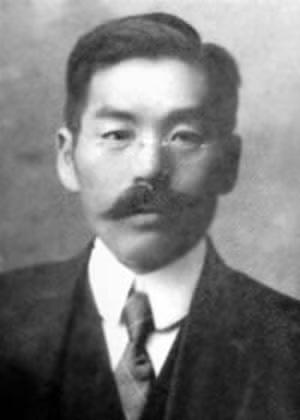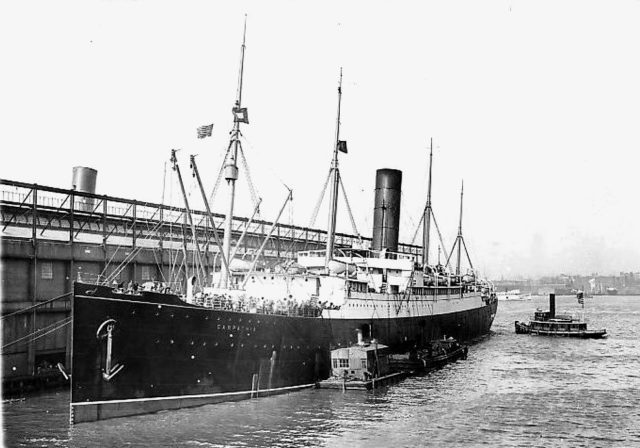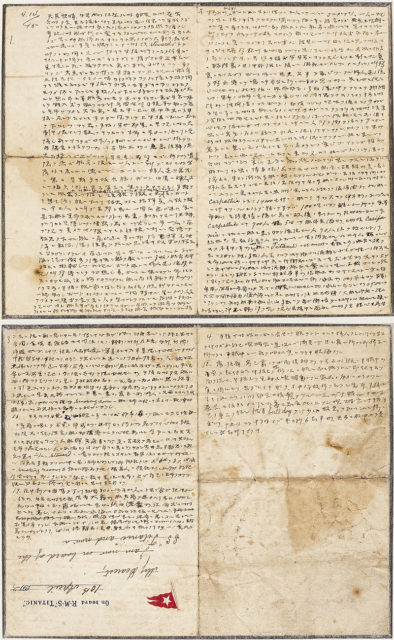Honor, duty, and shame are three traits deeply rooted in Japanese culture and have been for centuries. Think of a samurai warrior losing his honor. He could restore his honor only through taking his own life, in a rather brutal way, by committing hara-kiri. Such an act was perceived as a heroic way to die, allowing the warrior to eliminate any trace of shame that may have been associated with his name.
Unlike in Western cultures, where many social issues revolve around guilt and can be dismissed through legal proceedings or through psychotherapy or an act of confession to a priest, the concept of shame is at the very core of Japanese culture and can’t be lifted until the person does what the community expects. That expectation often included the drastic measure of taking one’s own life.
Which brings us to the case of Masabumi Hosono, whose disgrace, within the context of his native culture, was to befall him on the night of the sinking of the RMS Titanic. As records show, he was indeed the only Japanese traveler to board the fateful Titanic and to survive one of the most notorious maritime tragedies of all time.
As an employee of the Japanese Transportation Ministry, Masabumi Hosono had completed a work trip to Russia and booked a second-class ticket on the ship of dreams. He came to England after his assignments in Russia, where he studied the country’s railway operations. As he boarded the Titanic at Southampton, he was set on his journey back home.

On the night of the tragic sinking, Hosono was already asleep when the ship hit the iceberg. A loud knocking on his cabin door woke him, and he quickly rushed outside. The ship’s crew instructed Hosono, as a foreigner, to move to the lower decks of the ship, which were some distance from the lifeboats.
Hosono’s experience of the terrifying sinking is described in a letter he prepared for his wife, passages of which have been published on Encyclopedia-Titanica.org. He writes at one point how he was unable to “dispel the feeling of utter dread and desolation.”
He goes on in the letter, writing that he was already preparing mentally for taking his last breath and hoping “not to leave anything disgraceful as a Japanese.” Still, like anybody else amid the panic, Hosono was looking for a way out, to manage somehow and save himself from the ice cold water.

So, at some point, one of the officers assigned to loading the lifeboats (accounts vary whether this was lifeboat 10 or 13) yelled at the crowd that there was space for two more people. Right in front of Hosono’s eyes, a man rushed to jump into the boat, and taken by the moment, he jumped next, thereby avoiding death. Hosono wrote that he had found himself in deep despair at the thought of never seeing his loved ones ever again.
Along with the rest of the survivors, Hosono arrived in New York. Initially there wasn’t a lot of attention paid him. Helped by friends, Hosono eventually reached his homeland, where newspaper headlines declared him to be the “Lucky Japanese Boy.”
He provided statements, interviews, and family photos for several newspapers in Japan, and this gave him a level of fame. Soon enough, however, things turned for the worst as Hosono was rebuked in the United States. A harsh denouncement, made by Archibald Gracie, a first-class passenger and another Titanic survivor, called him a “stowaway.” Japanese newspapers followed up quickly, criticizing Hosono publicly and blaming him for his deed–for making it through while so many had perished in the ocean.
Strange times indeed, but things got worse. Hosono was fired from his post at the ministry. Textbooks appeared that made reference to his case as an example of disgraceful behavior. Professors declared that his deed was unethical. Hosono was later given back his job, with the explanation he was a very skilled employee. He continued to work there until he passed away in 1939. However, the disgrace persisted to shadow the family name.

While Masabumi Hosono would never personally speak about the night of the sinking–the night of shame–family members published the emotional letter he wrote to his spouse on several occasions after his death. The last publication of the letter came from Masabumi’s grandchild, Haruomi Hosono, a noted musician in Japan, who used the moment when James Cameron’s Titanic was about to be released in theaters.
As Haruomi Hosono explains, the act of republishing the letter allowed for a degree of relief for the family, the right way to restore the honor of the surname Hosono. It might seem a bit hard to comprehend why it was necessary for a family member to publish the letter yet again, but it was a decision made with hope, that Masabumi Hosono’s words would show his emotional self, and that eventually, those words would have the capability to lift the shame from the Hosono family.
